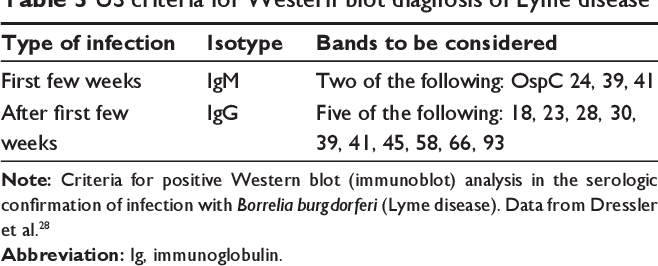
EM usually occurs within one month following the tick bite.
Lyme antibody cross reactivity skin#
Early localized disease is characterized by the appearance of the characteristic skin lesion, EM, with or without constitutional symptoms ( picture 1). However, the clinical features of each stage can overlap, and some patients present in a later stage of Lyme disease without a history of prior signs or symptoms suggestive of earlier Lyme disease: (See "Treatment of Lyme disease", section on 'Early localized disease (single erythema migrans)'.)Ĭonsistent clinical manifestations - The clinical manifestations of Lyme disease can generally be divided into three phases: early localized, early disseminated, and late disease ( table 1). Americanum ticks have been identified as far north as Maine, so the range of A. In patients with STARI, a skin lesion indistinguishable from EM occurs following the bite of the Amblyomma americanum tick, not the Ixodes species tick. Similarly, an appropriate travel history can help distinguish Lyme disease from Southern tick-associated rash illness (STARI), an illness principally reported in the southeast and south-central regions of the United States. Such patients are often treated with a first-generation cephalosporin (eg, cephalexin), which is ineffective for treating Lyme disease. Without this history, an erythema migrans (EM)-like skin lesion could be misdiagnosed as either a spider bite or as community-acquired cellulitis due to pyogenic bacteria. However, patients can still be at risk for Lyme disease if they are from an endemic area and do not report a specific exposure.įor clinicians in nonendemic areas for Lyme disease who see patients with possible Lyme disease, it is especially important to obtain a detailed travel and activity history, with inquiries about prior residences and prior clinical findings that might be consistent with manifestations of Lyme disease. In addition, certain occupations and activities (eg, hiking, gardening) increase the likelihood of exposure. Transmission is most likely to occur from May through October, with a peak in June in northeastern states. In Europe, Lyme has been seen in many countries and is particularly prevalent in Central and Eastern Europe and southern parts of Nordic countries. State-specific information can be found on the United States Centers for Disease Control and Prevention website. In the United States, the primary endemic areas include Connecticut, Delaware, Maine, Maryland, Massachusetts, Minnesota, New Hampshire, New Jersey, New York, Pennsylvania, Rhode Island, Vermont, Virginia, West Virginia, and Wisconsin. Patients are at risk for Lyme disease if they are from or have travelled to an endemic area. The organisms are transmitted by the bite of infected Ixodes ticks (I. mayonii in the United States, and primarily B. Risk of exposure - Lyme disease is a spirochetal infection caused by Borrelia species ( B. Once Lyme disease is suspected, the approach to diagnosis depends upon the stage of disease. (See "Musculoskeletal manifestations of Lyme disease".)ĬLINICAL SUSPICION FOR LYME DISEASE - The diagnosis of Lyme disease should be suspected in patients who are at risk of exposure to ticks carrying Lyme disease and have clinical manifestations that are consistent with Lyme disease. (See "Lyme disease: Clinical manifestations in children".). (See "Clinical manifestations of Lyme disease in adults".). (See "Evaluation of a tick bite for possible Lyme disease".). (See "Immunopathogenesis of Lyme disease".). 
Specific considerations regarding the diagnosis of Lyme arthritis and neurologic Lyme disease, as well as topic reviews that discuss the microbiology, epidemiology, immunopathogenesis, clinical manifestations, treatment, and prevention of Lyme disease, are presented elsewhere. The diagnosis of Lyme disease will be reviewed here.

There is a broad spectrum of manifestations, and severity of disease is due, in part, to differences in the infecting species. In Europe and Asia, infection is caused primarily by either B.

burgdorferi) and, less commonly, in a region of the upper Midwest, by B. burgdorferi sensu stricto (hereafter called B. In North America, infection is caused primarily by B. In either case, the abbreviation for the genus is "B" and stands for both terminologies in the discussion below. The taxonomy of these spirochetes is undergoing revision, and the genus name may be represented as either Borrelia or Borreliella.

It is a bacterial infection caused by six species in the spirochete family Borreliaceae. INTRODUCTION - Lyme disease is the most common tick-borne disease in the United States, Canada, and Europe.








 0 kommentar(er)
0 kommentar(er)
